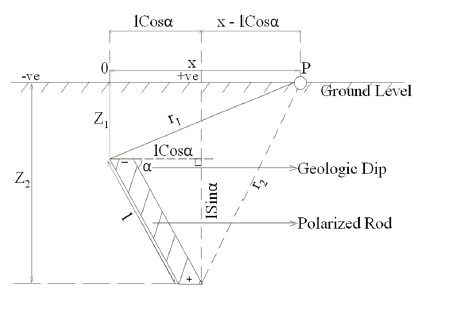Modeling of Self Potential (SP) Anomalies over a Polarized Rod with Finite Depth Extents
Keywords:
Modeling, self potential, polarized rod, geologic dip, depth of burialAbstract
Modeling is a powerful tool used by Geoscientists to provide pre-knowledge about the expectations of any geophysical field measurements. This study generates Self Potential (SP) anomalies over a typical dike-like structure to observe the influence of depth of burial and dip on SP anomalies. A computer program was developed from the potential distribution equation of an inclined polarized rod with a limited depth extent using Visual Basic (VB) programming language to produce synthetic data for potential distribution. The potential distribution data were used to generate theoretical SP anomaly curves for a polarized rod for varying depth of burial and dip. Twenty SP anomaly curves were generated with different dip values and depth of burial and from these curves, superimposed curves were also generated. The anomalies were analyzed for the effect of depth of burial and attitude or dip. The SP anomaly curves generated show that an increase in depth of burial causes a reduction in the peak negative amplitude of SP anomaly curves. For inclined polarized rod at relatively shallow depth (<2.0 m), the peak negative amplitude remains virtually the same with a positive shoulder over the down dip side of the target. Also as the dip angle decreases from 90o for a fixed depth of burial, the anomaly curves become asymmetrical. At 0o, the distance between the peak negative and peak positive amplitude of the anomaly curve is equal to the linear extent of the rod. Therefore, this study shows that the depth of burial inversely influences the amplitude of self-potential (SP) anomalies while the dip angle affects the form or symmetry of anomaly curves.

Published
How to Cite
Issue
Section
Copyright (c) 2019 Journal of the Nigerian Society of Physical Sciences

This work is licensed under a Creative Commons Attribution 4.0 International License.





